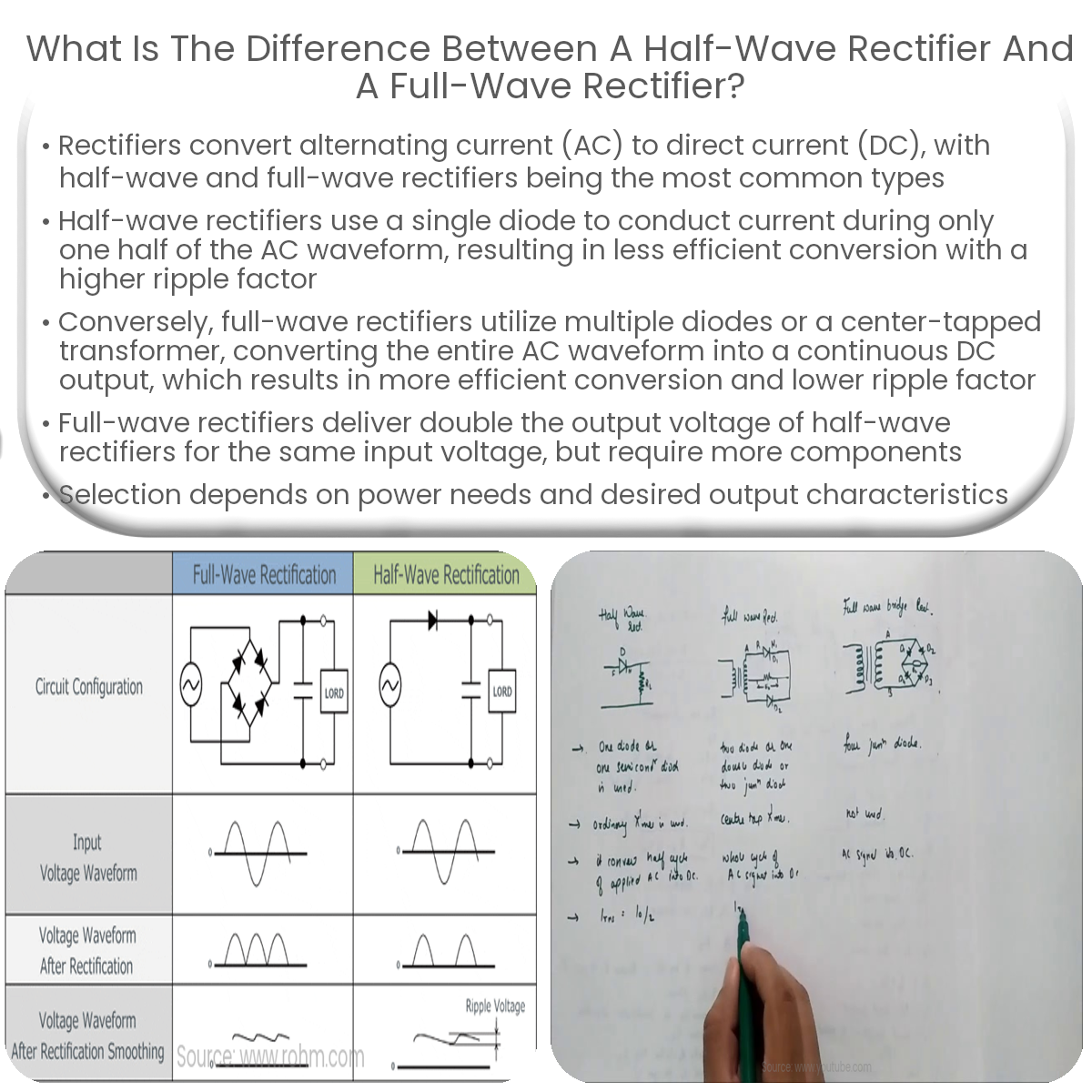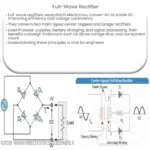Half-wave rectifiers convert only one half of the AC waveform, while full-wave rectifiers utilize both halves, offering higher efficiency and smoother output.
Half-Wave Rectifier vs Full-Wave Rectifier
A rectifier is a device used to convert alternating current (AC) to direct current (DC). In this article, we will explore the key differences between two common types of rectifiers: half-wave rectifiers and full-wave rectifiers.
Half-Wave Rectifier
A half-wave rectifier is the most basic type of rectifier. It works by utilizing a single diode that conducts current during only one half of the AC waveform, allowing the positive or negative half of the input AC signal to pass through. The other half of the waveform is blocked, resulting in a pulsating DC output. This type of rectification is less efficient and has a higher ripple factor, meaning that the output voltage fluctuates more. Half-wave rectifiers are usually used in low-power applications due to their simplicity and cost-effectiveness.
Full-Wave Rectifier
A full-wave rectifier, on the other hand, uses multiple diodes (usually four) or a center-tapped transformer along with two diodes to convert the entire AC waveform into a continuous DC output. This design takes advantage of both the positive and negative halves of the AC waveform, resulting in a more efficient conversion process with a lower ripple factor.
In a full-wave rectifier, the output voltage is twice that of a half-wave rectifier for the same input voltage, making it more suitable for higher power applications. Additionally, full-wave rectifiers require less filtering to smooth out the output voltage, leading to a more stable and reliable DC output.
Key Differences
- Efficiency: Full-wave rectifiers are more efficient than half-wave rectifiers, as they utilize both halves of the AC waveform.
- Ripple Factor: Full-wave rectifiers have a lower ripple factor, resulting in a smoother and more stable DC output voltage.
- Output Voltage: The output voltage of a full-wave rectifier is twice that of a half-wave rectifier for the same input voltage.
- Component Count: Full-wave rectifiers require more components (diodes or a center-tapped transformer) compared to the single diode used in a half-wave rectifier.
- Applications: Half-wave rectifiers are typically used in low-power applications, while full-wave rectifiers are more suited to higher power applications.
In conclusion, the main differences between half-wave and full-wave rectifiers lie in their efficiency, output voltage, and ripple factor. Choosing the appropriate rectifier for a specific application depends on the power requirements and desired output characteristics.





